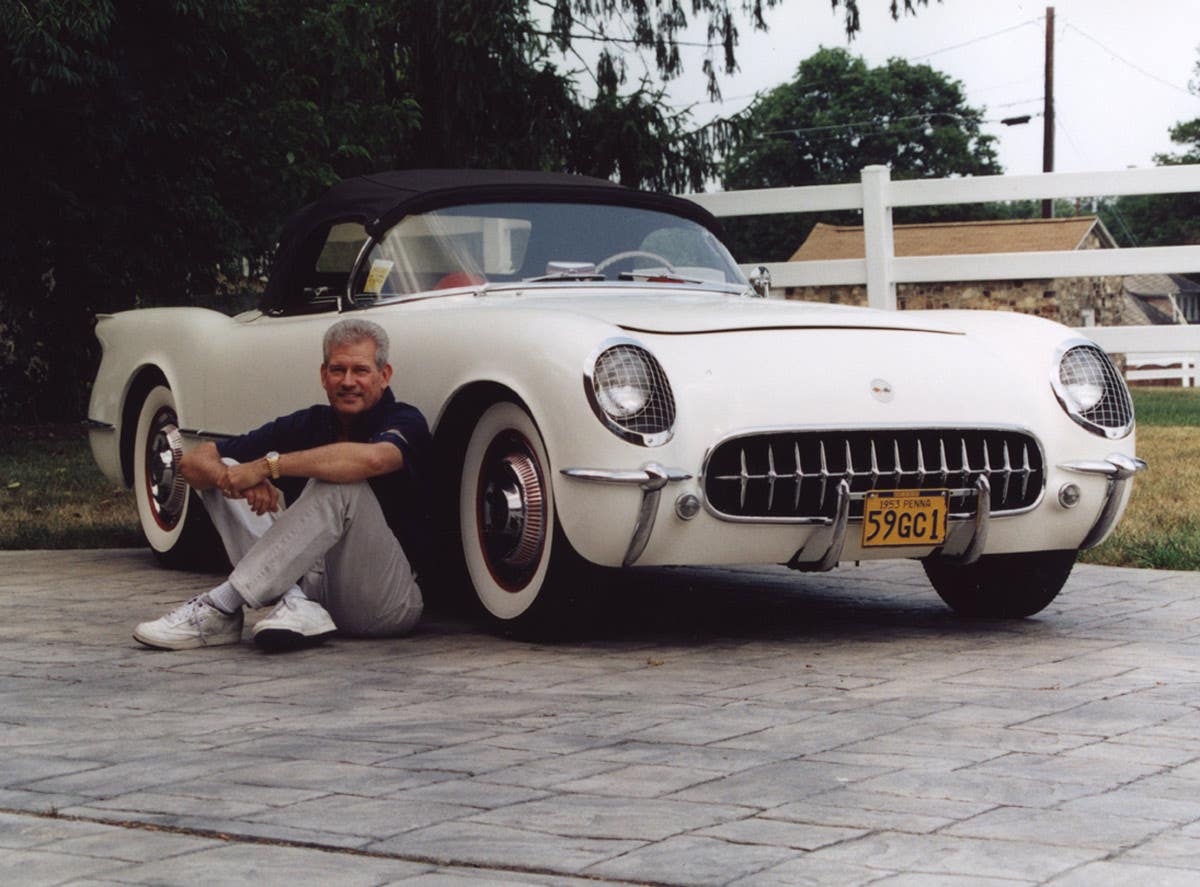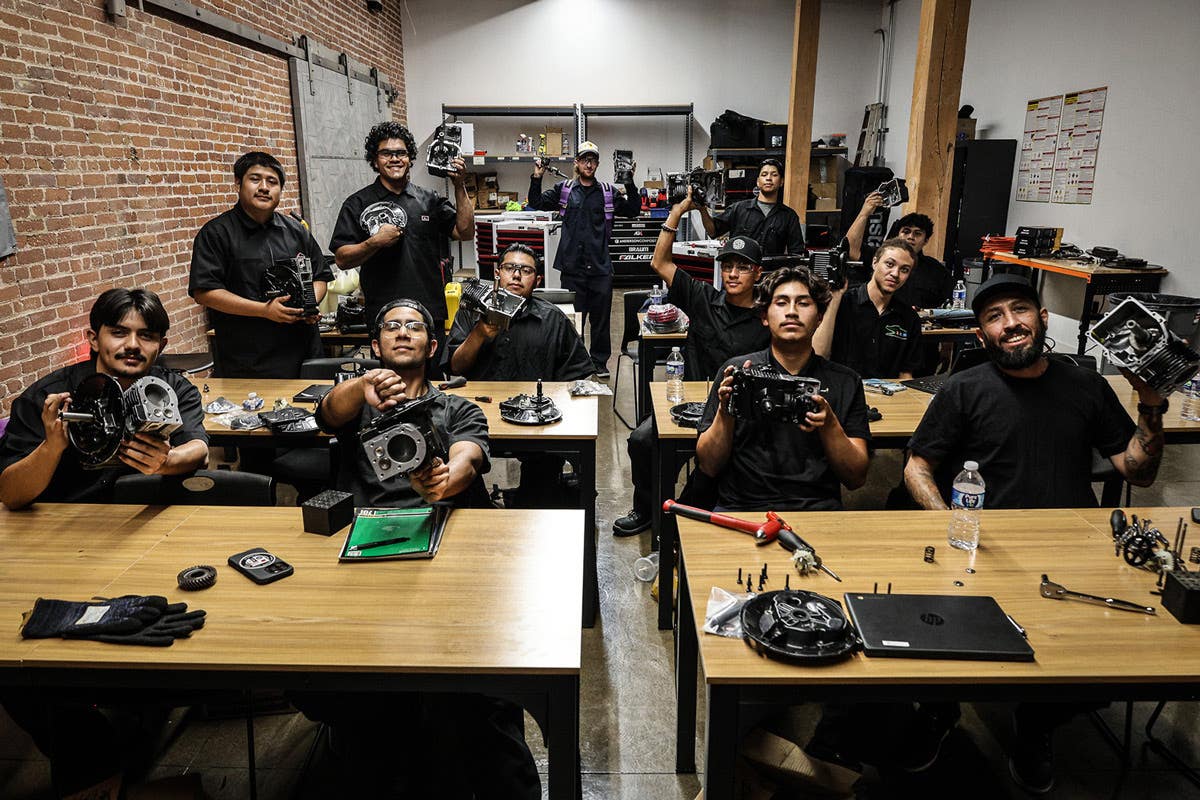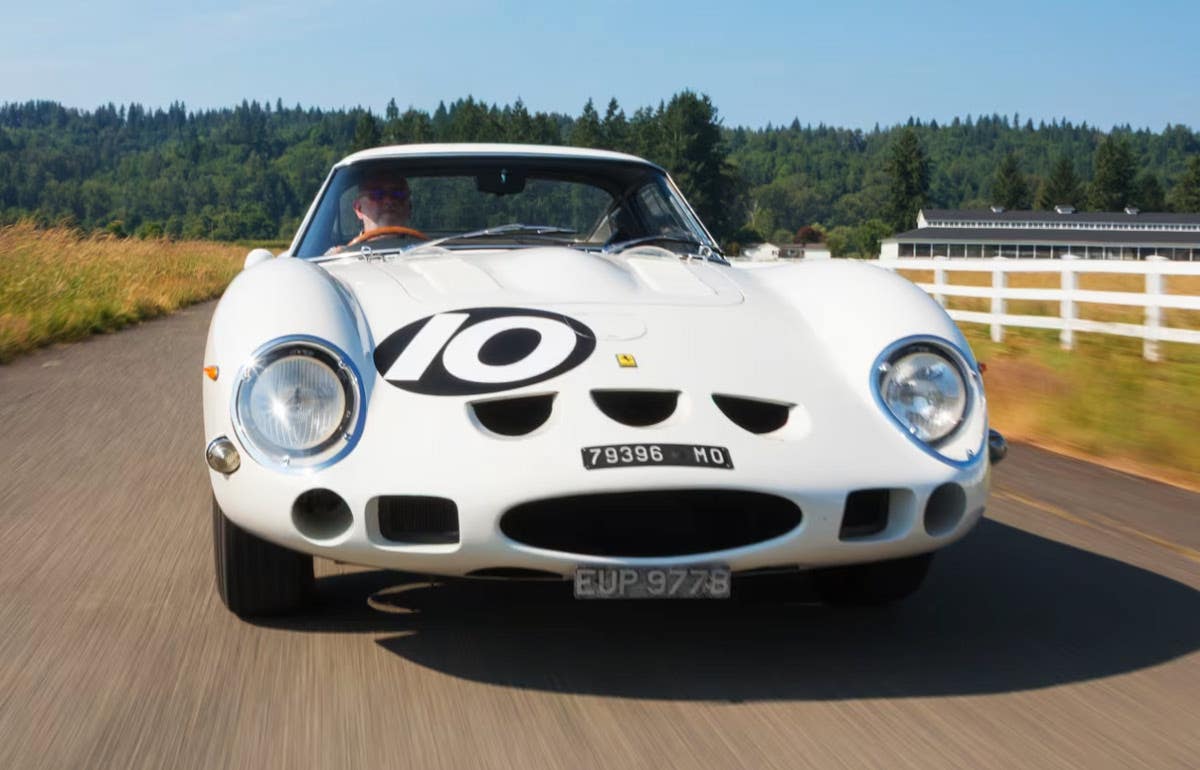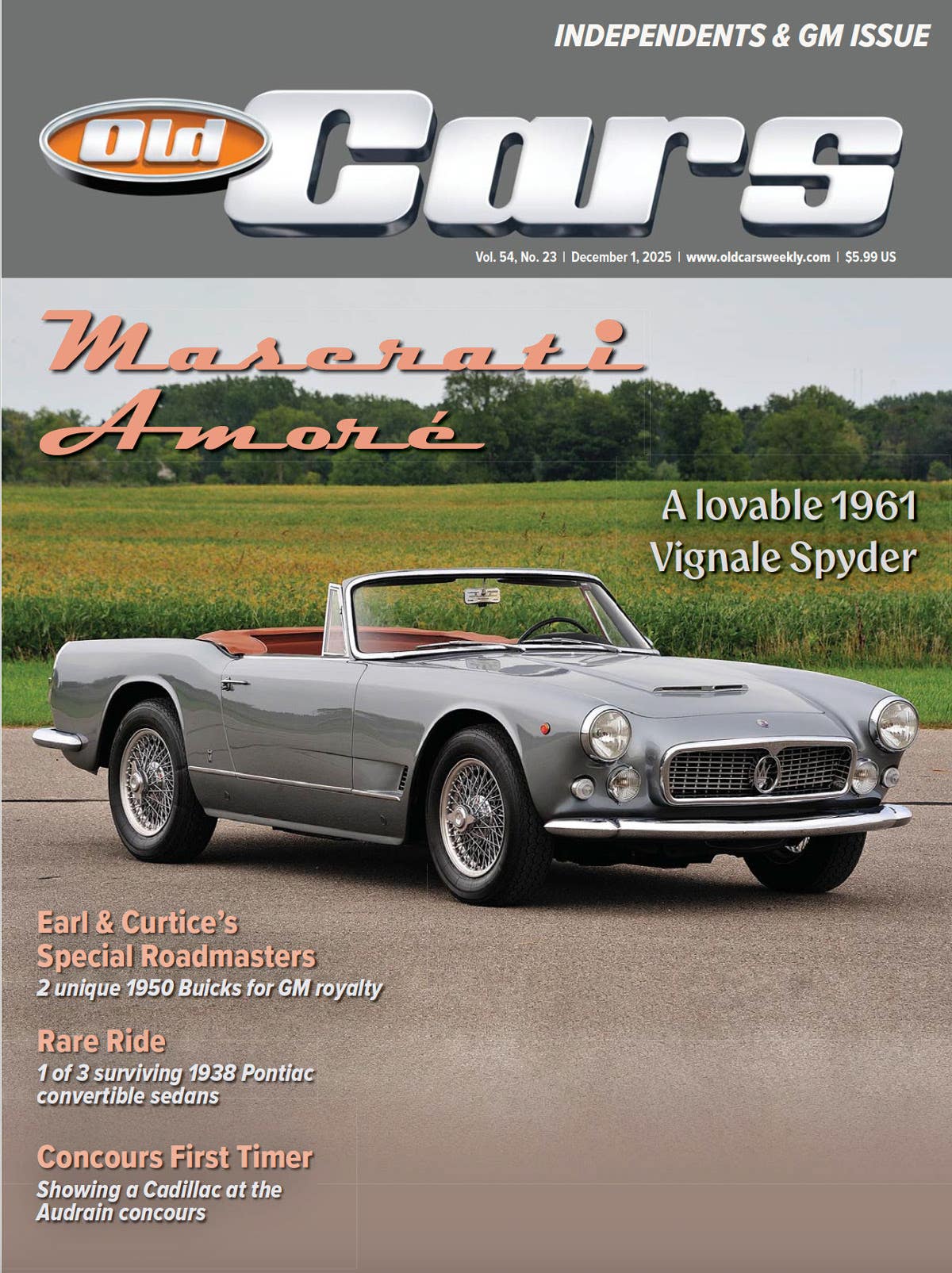Remembering Albert ‘Bud’ Drake
A celebration of Albert “Bud” Drake, a prolific author, Michigan State College English professor emeritus and respected Pacific Northwest hot rodder.
Albert “Bud” Drake, a prolific author, Michigan State College English professor emeritus and respected Pacific Northwest hot rodder, passed away on June 11, 2023. He was 88 years old.
I knew who he was, of course. And I am so sorry that I never met Al Drake in person. I enjoyed his writing for years, and when I bought one of his books (which was whenever a new one came out), he’d write an inscription, and often he’d enclose a little handwritten note. These missives were always complimentary and appreciative. He implied that we were kindred spirits as writers about hot rods, and we were lucky to have lived in the ’50s, the era when hot rodding came into its own (Al was 5 years older than me). I didn’t know Al well enough to call him “Bud,” and he signed his notes “Al,” so that’s who he was to me. I truly regret that I never picked up the phone after reading one of his books just to tell him how much I enjoyed his writing.
The first of Al’s books that I bought was “Street was Fun in ’51.” It was written in 1982. Drake was pictured on the cover of this small paperback, which was really a book of reminiscences. His faded cover car was a Model A roadster equipped with a dual-carb flathead. The roadster sits rather high, on General Jumbo wheels, and it looks like a car that a kid on a limited budget would have built. Al owned that A-V-8 before he was even old enough to have a driver’s license.
Although Al lived in the Portland, Ore., area, he was fascinated with the California hot rod scene. Eventually he made his first pilgrimage to the dry lakes, located to the north and east of Los Angeles.
Al also had the opportunity to buy a collection of historic black-and-white dry lakes photographs, and with faded photographs in hand during 1977 and ’78, Al visited older hot rodders in California to see if anyone could identify the cars and/or the people in the images. At the same time, he purchased vintage copies of SCTA (Southern California Timing Association) programs so he could compile a chronology of the early days of hot rodding.
Finally, in his 1993 book “Hot Rodder! From Lakes to Street,” Drake wrote an oral history painstakingly compiled from his visits to California during the 1970s when he transcribed his long talks with dry lakes pioneers such as Eldon Snapp, Bill Kenz, Karl and Veda Orr, Burke LeSage, Dan Iandola, Strother MacMinn, Wally Parks, Lyn Yakel, George Bentley and many others. If you’ve studied the early history of hot rodding, you’ll know those names. Al’s subjects loaned him photographs and they’re all reproduced in this book.
Al also spoke with famous professional custom car builders such as Joe Bailon and Bob Kaiser, and he talked with people he called “observers,” such as Roger Huntington, a prolific automotive engineer and writer in the 1950s, and Peter Sukalac, a well-known automobile magazine photographer from the Pacific Northwest. (The chapter on Peter Sukalac became a stand-alone book in 2021).
Al’s book “Hot Rodder!” included a wonderful interview with Henry Gregor Felsen, the author of “Hot Rod,” “Street Rod,” “Rag Top,” “Crash Club,” “Fever Heat” and “Road Rocket.” Felsen’s novels were fascinating to kids like me in the ’50s. They were fictional object lessons on safe driving written with a hot rod theme. Felsen initially wrote “Hot Rod” for the Des Moines Safety Council. After a favorable review in The New York Times, it was published as a Bantam paperback, and it subsequently sold more than two million copies.
“Hot Rod” was written about Bud Crayne, a fictional high school hot rodder and rebel who drives a chopped ’34 Ford coupe with a full-race flathead. He works in a service station, and he’s a talented driver. But he races on the street, setting a bad example for local teenagers. When a fellow teen is badly injured in a crash, the local policeman convinces Crayne to drive the injured kid to the hospital in his police cruiser, because Bud is the better driver. If you’ve never read “Hot Rod,” or any of Felsen’s books, I won’t spoil the ending, but suffice it to say, to this day, whenever I drive my ’32 Ford roadster, I think of Bud Crayne, keenly checking his gauges and listening for the slightest miss in his powerful flathead V-8. Henry Gregor Felsen was all but forgotten, despite the effect his books had on so many youngsters in the 1950s. Leave it to Al Drake to track him down and retell his story.
Another wonderful Al Drake book, “Flat Out,” was published in 1994. In it, Drake expanded his dry lakes coverage, revisited many lakes heroes and found others. This book has even more photographs, with most of the cars and drivers identified. Drake’s publishing company, Flat Out Press, printed and distributed more than 25 titles over the years, including books of poetry. These books are all different sizes; there’s really not a continuous visual theme. Best of all, they’re all paperbacks and you can still find them on eBay. Over the years, Al wrote more than 400 articles — mainly about hot rods — and some of them for Old Cars. He wasn’t a wealthy man, but his work is a treasure we can still enjoy.
“Flat Out,” arguably Al Drake’s seminal work, came after Don Montgomery’s wonderful photo compilation books such as “Hot Rods in the Forties (1987) and “Hot Rods As They Were” (1989). Montgomery is correctly credited with influencing the “nostalgia” movement that saw many people closely studying these old photos, then building contemporary hot rods very much the way they were constructed in the 1950s. Montgomery’s eighth and last book, “Old Hot Rods Scrapbook,” published in 2006, presented hundreds of historic black-and-white photographs of hot rods, all taken back in the day.
Books by both Al Drake and Don Montgomery have a big influence on practitioners of “classic” hot rodding. Add in a beautifully written book, “The American Hot Rod” (1995), by Dean Bachelor, and you have a trilogy of significant hot rod writers.
In 1999, Al autographed my copy of “Flat Out” as follows:
“To Ken Gross, a guy who loves to go flat out, in a machine or at the typewriter, with best wishes.”
He signed it, “Albert Drake, fellow writer.”
“Flat Out” is filled with the old photographs that Al borrowed from many hot rod pioneers. He painstakingly traced the roots of hot rodding from Los Angeles to the dry lakes and Bonneville and chronologically arranged the photos so readers could see how cars developed over the years. Dean Bachelor’s book, published a few years earlier, did much the same, but Dean’s work is very polished and professional. Al’s effort is more like a scrapbook of photos and SCTA program pages. They’re both terrific.
Hot rod book highlights
We don’t have room to cover all of Al Drake’s books, but here are a few highlights:
“The Brotherhood of Speed” (2012), written with Al Pennington, is a 426-page history of the “Slo Poks” hot rod club from Vancouver, Wash. It was published by Murphy Hill Farm/Stone Press in Vancouver, and it’s the complete history of a very active car club that began in late 1951 or early 1952. The club is still around, making it one of the oldest hot rod clubs in the country.
“Reflections in a Spinner Hubcap” (2020) is a collection of stories, essays and columns that Drake initially published in Goodguys Gazette, Hop Up, Old Cars Weekly, Classic Cars and other periodicals. It’s a good bedside read, a few chapters at a time. You’ll fall asleep dreaming about the ’50s.
“A 1950’s Rod & Custom Builder’s Wish Book” was published in 2009. It’s a compendium of ’50s print ads for speed and custom equipment featuring nearly every major maker (and many minor makers) of speed equipment and accessories. If you want to see what these items looked like in the day, and learn what they cost new, this all-illustration book is a must-have.
“Portland Pictorial” (2006) memorializes many long-lost cars and people from the Portland, Ore., area --- underscoring that hot rodding in the ’50s knew no boundaries. The cars pictured are sometimes amateurish, reflecting their builder’s skill (or lack thereof), but there’s a consistency of purpose, and you have to wonder how many of these cars survive, perhaps hidden under a tarp in a single-car garage. Luckily, many of them live on in this book.
“Jacket & Plaque: Portland Rod & Custom Clubs of the Fifties” is a 200-plus-page scrapbook of car club memorabilia: jackets, plaques, trophies, courtesy cards (remember those?) and countless photographs of guys and trophy gals from the Portland area. Nobody but Al Drake could gather and present all those show tickets, programs, pins, armbands and gosh knows what else from the ’50s. You can’t speed read this book — every photograph is worth studying.
“Fifties Flashback: The cars we drove, the clothes we wore, the movies we saw, books & comics, car shows, magazines...” (1998) is another scrapbook of 1950s ephemera, but it’s much more than that. And whether you lived in that era (as I did) and fondly remember it, or just want to learn more about mid-century life, this book will take you back. Besides reprinted magazine covers, pages from hot rod comic books and reviews of the Floyd Clymer and Fawcett paperbacks, there’s considerable thoughtful analysis of the times, the customs and the fads —- it’s worth reading.
“The Age of Hot Rods” (2008) has a blurred cover photo of a 1937 Ford coupe that was a Hot Rod Magazine cover car in 1952. Glenn Johnson and his wife appear in a feature that exclaimed, “We chopped and channeled our car at home!” And they did, producing a custom rod that was good enough to be a cover feature. The book is a series of essays and photographs that evoke much of the magic of the ’50s. Al Drake covered the same basic subject many times, but he always found different ways to interpret what he’d experienced.
“Overtures to Motion” (2011) runs the gamut from essays on tether cars (motorized model race cars), and kiddie pedal cars to custom accessories and personalities — all with cars as the underlying theme. There’s an essay on Ken W. Purdy, my all-time favorite car writer and his efforts in “True: The Men’s Magazine.” Chapters range from a look back at washing machine motor-powered bicycles, reminiscences about a 1942 Mercury, automatic cigarette lighters (“an accessory we’ll never see again”) and even a look at Studebakers as circus stars.
Al Drake entertained hot rodders and car enthusiasts for years with his simple memories and hot rod history research. His books will take you back to a simpler time — and you may just want to stay there....
*As an Amazon Associate, Old Cars earns from qualifying purchases.
If you like stories like these and other classic car features, check out Old Cars magazine. CLICK HERE to subscribe.
Want a taste of Old Cars magazine first? Sign up for our weekly e-newsletter and get a FREE complimentary digital issue download of our print magazine.







